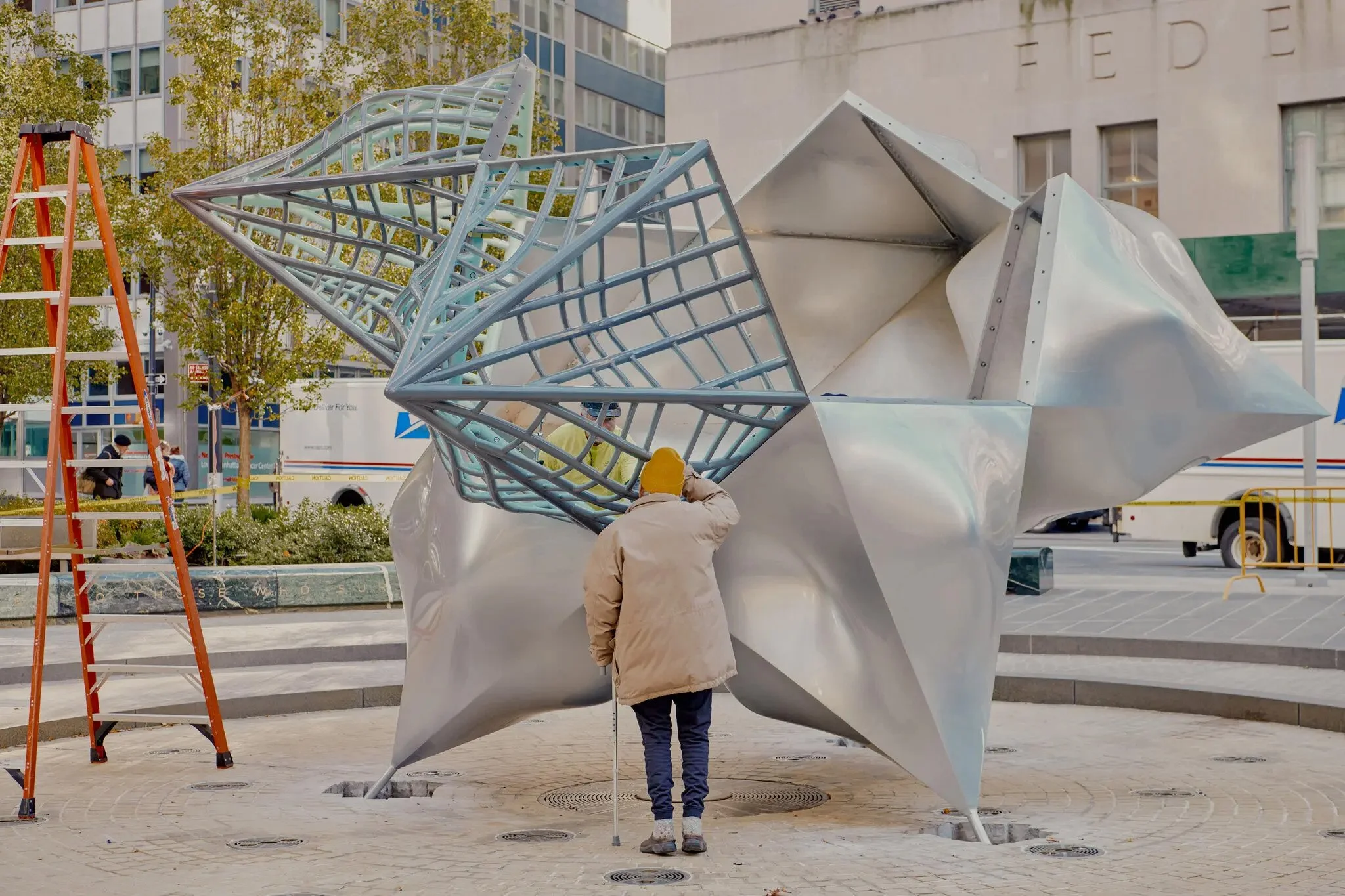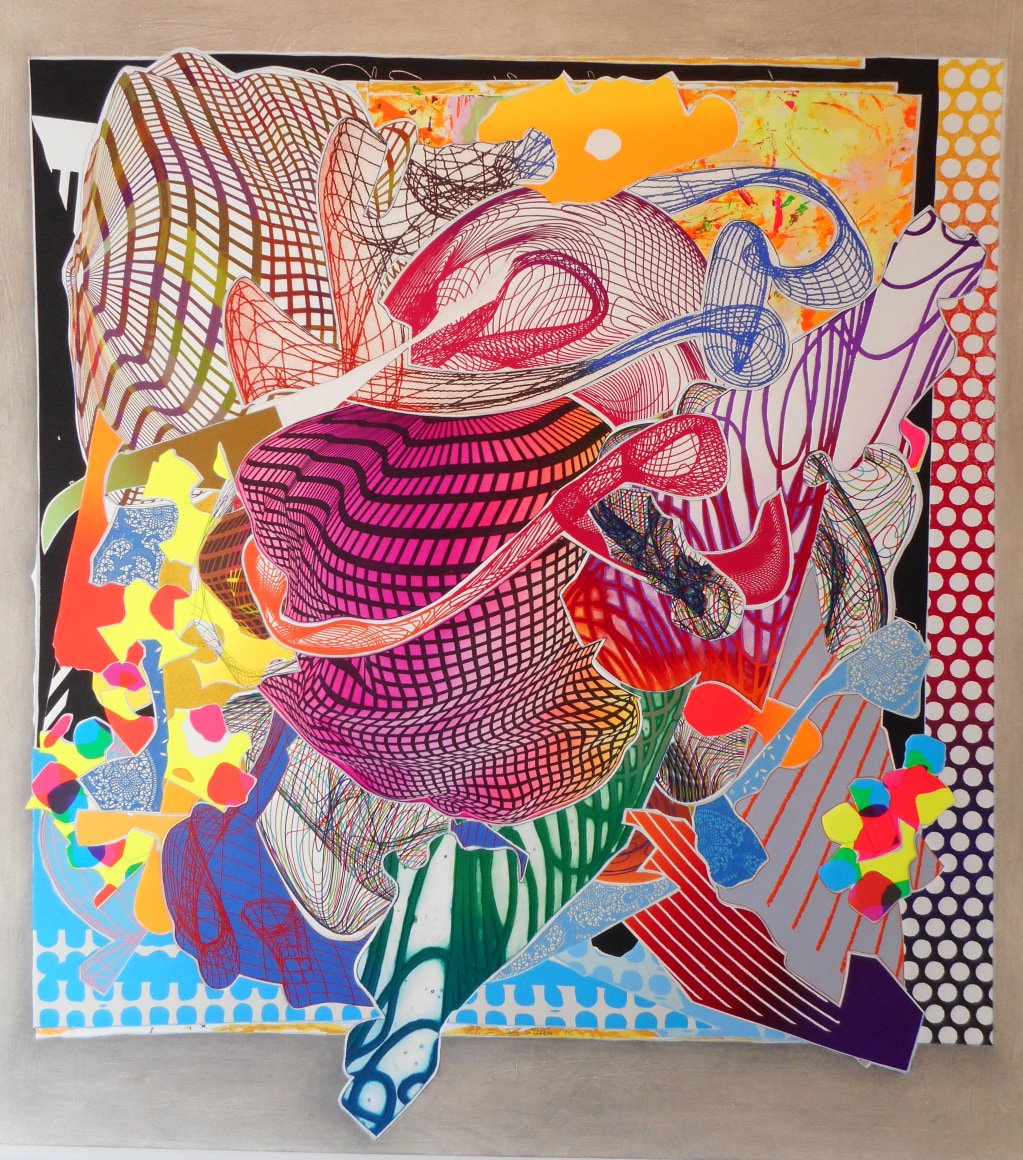Geometries
Painting stalled out in the late 1950s. Struggling to escape its own history and with abstraction in a holding pattern, Frank Stella entered the scene. Taking his compositional cues from the simple geometries and go-faster stripes of artists like Barnett Newman and Jasper Johns, Stella’s minimalism expunged the last vestiges of representation, replacing them with unapologetic simplicity and directness that would break the plateau.
Among the most well-regarded and historically important artists working today, Stella emerged out of Princeton with his Black Paintings (1958-1960), featuring prominently in the Museum of Modern Art’s 1959 exhibition “Sixteen Americans.” Giant raw canvases with concentric pinstriping executed in heavy black enamel house paint, The Black Paintings and later Copper Paintings and Aluminum Paintings (1960-62), are still among the artist’s most recognizable works. Despite early success, Stella never stopped innovating and pushing the envelope of painting as a medium.
Through the 1960s, ’70s, ’80s, and ’90s Stella’s paintings became increasingly sculptural as his color palette slowly transitioned from monochromatic to nearly panchromatic. The artist’s canvases famously evolved from square and rectangular to L-shaped and cruciform, then moving into curvilinear and eventually organic biomorphic assemblages that would blur the lines between painting and sculpture. That Stella’s march toward increasingly complex geometries coincided perfectly with rapid advances in computer-aided drafting (CAD), digital fabrication, and 3D printing, is of great serendipity.
As early as the 1990s, Stella leveraged computers to devise forms and shapes that would be difficult if not impossible to conceive of with analog tools alone. Thus “Geometries” is the culmination of a thirty-year dialogue with computation and a sixty-year exploration of painting and physical space driven by one of the most iconic artists of his generation. Rendered in ambient occlusion, the subtle interplay of carefully sculpted shapes exhibits a reserve and sensitivity to form and balance absent in much of contemporary digital 3D art. While one can easily imagine these as maquettes for physical sculptures fabricated at scale, they more than hold their own in their natively digital format and lend themselves quite naturally to minting as non-fungible tokens (NFTs).
At 86 years old, Stella intuitively understands the zeitgeist as well as the potential of NFTs. Long a champion of artists’ rights, often in conjunction with Artists Rights Society and now with ARSNL as well, the idea of automated royalties driven by smart contracts, and a push for a more equitable system for artists, clearly resonate. Aware that the market for his work prices out most younger collectors, digital editions also appeal as a way to increase accessibility to a new generation. But as an artist known for challenging and expanding standards, not for following them, Stella also pushes the potential of NFTs with “Geometries” by licensing the 3D models for future remix by their owners –– as ever leading the way by fearlessly opening new avenues of exploration for others to follow. ~ Jason Bailey







